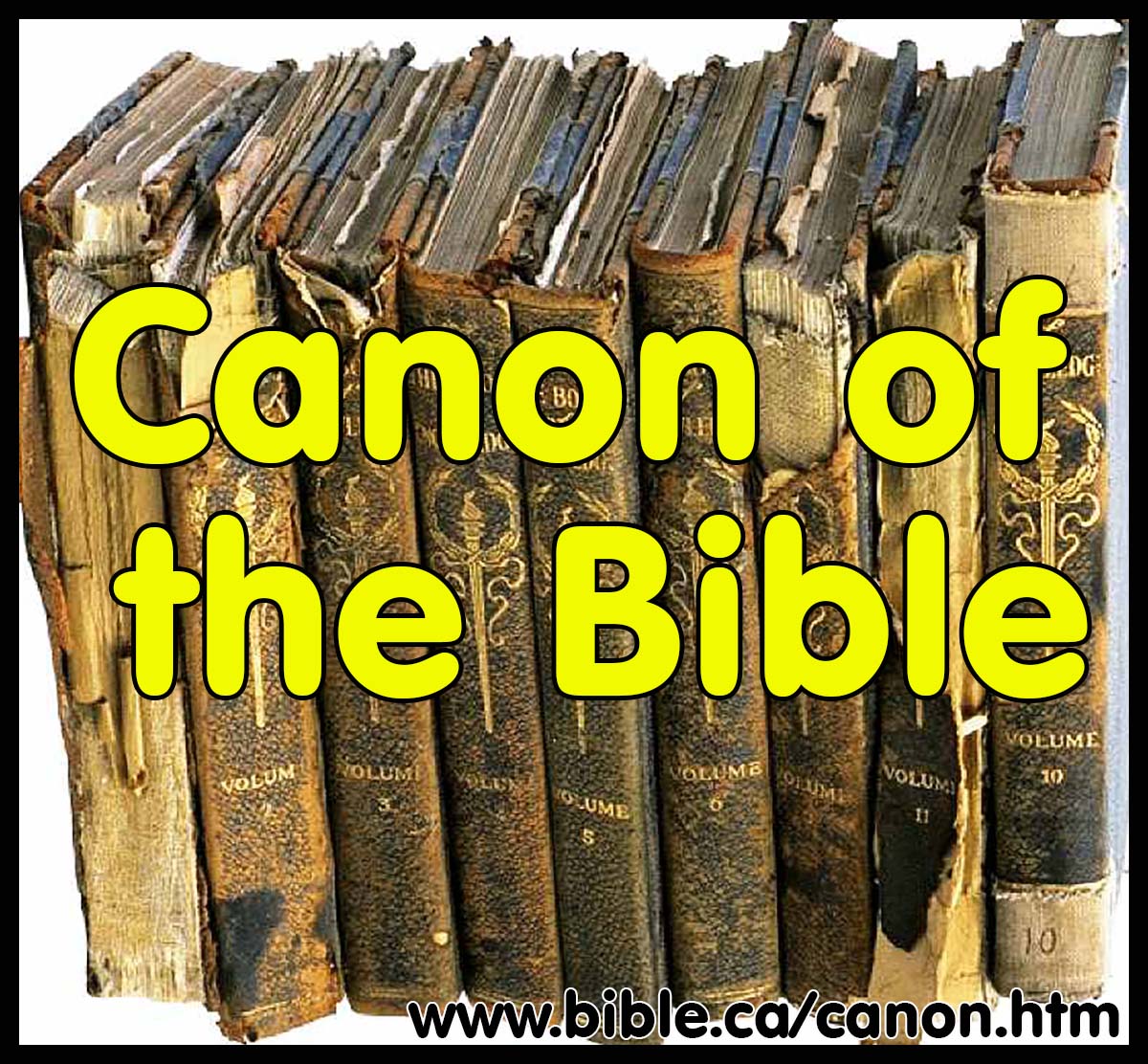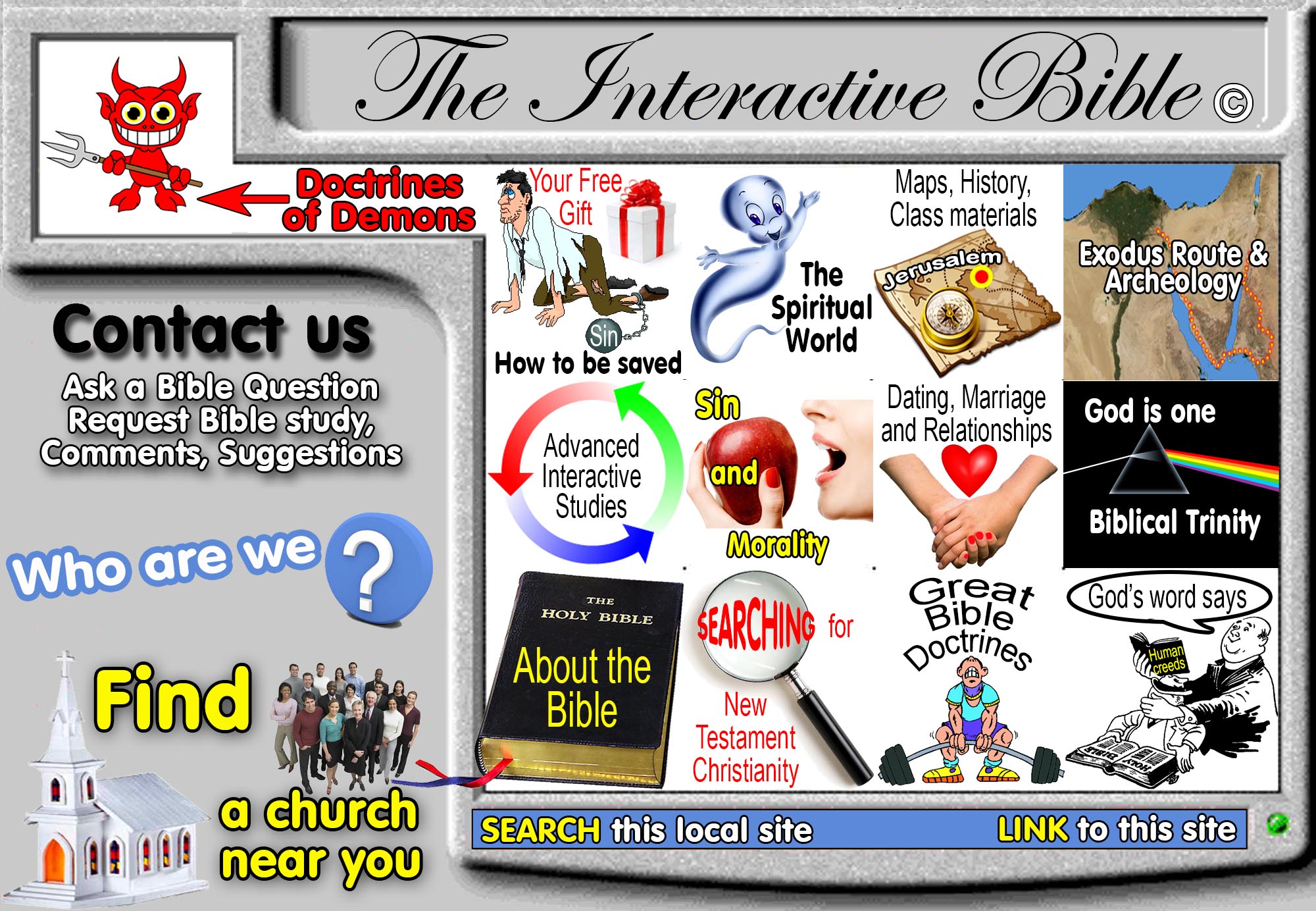|
Criteria used by Apostolic Fathers to determine canon A conservative, bible believing perspective! |
God's providence gave us the 27 book New Testament Canon, not the church. God, not men decided the canon. This providence does not mean that church leaders were inspired in their selecting the canon, only that God had his eye on the scriptures the whole time and brought about His will to form the Bible we see today!
|
|
Criteria used by apostolic fathers to determine canon |
I. Written by an apostle vs. non-apostles:
- Tertullian, the "Father of Latin Theology" (ca. 160-225), witnesses to the authority of writings in the Western church. He stressed the criterion of apostolicity. For example, in his writing Against Marcion he clearly distinguishes gospels of apostolic origin and gospels written by disciples of apostles. He writes: "Of the apostles, therefore, John and Matthew first instill faith into us; whilst of apostolic men, Luke and Mark renew it afterwards."" Tertullian did not produce a list of what was in his Old Testament and New Testament, but it is significant that he refers to the two parts of the Christian Bible in a collective way as totttm instrumentum utriusque testamenti. It seems that what we may call his "New Testament canon" included the four gospels, thirteen Pauline letters, Acts, 1 John, 1 Peter, Jude, and Revelation. He referred to these writings in an authoritative manner, and called them an "entire volume."" He names the main parts of the New Testament "Gospels" and "the Apostles," the latter phrase probably denoting the apostolic letters .41 Once again, we note that the boundaries of the apostolic letters are not defined with certainty, but this should not prevent us from seeing that for Tertullian the Bible was a "fixed entity." (Lee Martin McDonald, James A. Sanders, Editors: The Canon Debate; Peter Balla, Evidence for an Early Christian Canon: Second and Third Century, p 382, 2002)
II. What was read aloud in weekly assemblies:
- What was read in the congregation was probably a key factor in most cases, but even this phenomenon needs differentiation. We have seen that books not in our canon today were widely read by early Christians. However, this does not necessarily mean that they too were regarded as authoritative. The Muratorian Fragment shows that the Shepherd of Hermas was suggested as reading-matter, yet it was accorded a lesser authority and was not to be read "publicly in the church," because it had been written more recently (lines 77-78). Even the Festal Letter of Athanasius (from 367 C.E., containing a clear acknowledgement of the New Testament canon of twenty-seven books) permits the reading of other literature, including the Shepherd of Hermas. The early church possessed literature edifying as reading matter as well as writings with a higher authority. (Lee Martin McDonald, James A. Sanders, Editors: The Canon Debate; Peter Balla, Evidence for an Early Christian Canon: Second and Third Century, p 385, 2002)
- Use: The regular use of writings in the ancient churches was also an important factor in their selection for the New Testament canon. This is what Eusebius had in mind when he mentioned that certain writings were "recognized" (homolegoumena) among the churches and became "encovenanted" (endiathekoi = "testamented" or "canonical"). 64 The wide-spread use of the New Testament writings in the churches may have been the most determinative factor in the canonical process. The fact that the authorship of Hebrews was strongly questioned, yet it made it into the New Testament canon, suggests that churches were reluctant to dismiss a useful and cherished document. An important factor was who was favorable toward the acceptance of a document and who was not. Athanasius and Epiphanius, for instance, would have had a greater influence on the church than many lesser known figures. Also, larger churches in the metropolitan centers such as Antioch, Alexandria, Rome, Ephesus, and the New Rome, Constantinople, were more likely to have a greater influence on which books were included than were the smaller churches in rural areas. While most New Testament writings were known and used by most of the churches in Eusebius's day, doubt lingered over others. These "disputed" (antilegomena) writings included James, 2 Peter, 2 and 3 John, Jude, probably Revelation, and possibly Hebrews. Notice for example, how Eusebius acknowledges wide acceptance of 1 John, but is reluctant to accept 2 and 3 John and Revelation. For him, the Gospel of John and 1 John have been "accepted without controversy by ancients and moderns alike but the other two are disputed, and as to the Revelation there have been many advocates of either opinion up to the present. This, too, shall be similarly illustrated by quotations from the ancients at the proper time ." [Eusebius, Hist. Eccl. 3.25.1-7] This shows his considerable interest in what the majority of churches concluded about the matter of canon. (Lee Martin McDonald, James A. Sanders, Editors: The Canon Debate; Lee Martin McDonald, Identifying Scripture and Canon in the Early Church: The Criteria Question, p 432, 2002)
III. What was consistent and contradiction free:
- Third, Barton maintains that if a writing was believed to be scripture, it was also was believed to be internally self-consistent and not self-contradictory. For example, in Justin's famous Dialogue with Trypho, he admonishes that if Trypho had spoken ill of the scriptures in error or without ill intent, he would be forgiven, but, 'if you have done so because you imagined that you could throw doubt on the passage, in order that I might say the scriptures contradicted one another, you have erred. But I shall not venture to suppose or to say such a thing, and if a scripture that appears to be of such a kind be brought forward, and if there be a pretext for saying that it is contrary to some other, since I am entirely convinced that no scripture contradicts another, I shall admit rather that I do not understand what is recorded, and shall strive to persuade those who imagine that the scriptures are contradictory to be rather of the same opinion as myself.' (Adapted from Trypho 65.2, ANF) (Lee Martin McDonald, James A. Sanders, Editors: The Canon Debate; Lee Martin McDonald, Identifying Scripture and Canon in the Early Church: The Criteria Question, p 421, 2002)
IV. What reinforced the consensus of belief:
- Orthodoxy: This theological concern led the early church to employ the "rule of faith" as the criterion of "orthodoxy" to determine which writings could be used in the church. Bishop Serapion (ca. 200) rejected the reading of the Gospel of Peter in church because of this criterion of truth. When asked by the church at Rhossus ... whether the Gospel of Peter could be read in their services, he at first agreed because it had an apostle's name attached. But later he reversed his decision saying, "since I have now learnt, from what has been told me, that their [the authors'] mind was lurking in some hole of heresy, I shall give diligence to come again to you; wherefore, brethren expect me quickly." His rejection was based upon the book's divergence from what was generally accepted as true in the churches. It was not because of its questionable authorship, though that may have played a small role, but because the theology was considered out of step with the "rule of faith" operating in the church. (Lee Martin McDonald, James A. Sanders, Editors: The Canon Debate; Lee Martin McDonald, Identifying Scripture and Canon in the Early Church: The Criteria Question, p 428, 2002)
V. What was written during the apostolic age:
- Antiquity: The traditional understanding of canon formation is that the church at first recognized only the Old Testament writings as scripture. Later, as the Gospels and Epistles (at first only Paul's) began to circulate among the churches they too were accorded scriptural status. Barton, however, challenges the traditional view, noting that in the first two centuries Christians generally referred to their own writings more than to the Old Testament. They did not cite the Old Testament equally until it was becoming finalized for the church. He also notes that during the second century, "all but a very few Old Testament books (such as Isaiah or the Psalms) already play second fiddle to the Christians' own writings."" Nevertheless, he acknowledges that antiquity played a significant role in society in the ancient world; a religion's antiquity enhanced its credibility. (Lee Martin McDonald, James A. Sanders, Editors: The Canon Debate; Lee Martin McDonald, Identifying Scripture and Canon in the Early Church: The Criteria Question, p 430, 2002)
VI. Augustine indicates a balance between "scale of use" between smaller vs. larger, more prominent churches:
- "Accordingly, among the canonical Scriptures he will judge according to the following standard: to prefer those that are received by all the catholic churches to those which some do not receive. Among those, again, which are not received by all, he will prefer such as have the sanction of the greater number and those of greater authority, to such as are held by the smaller number and those of less authority. If, however, he shall find that some books are held by the greater number of churches, and others by the churches of greater authority (though this is not a very likely thing to happen), I think that in such a case the authority on the two sides is to be looked upon as equal." (Augustine, Book 2, Chapter 8, The Canonical Books)
By Steve Rudd: Contact the author for comments, input or corrections.

